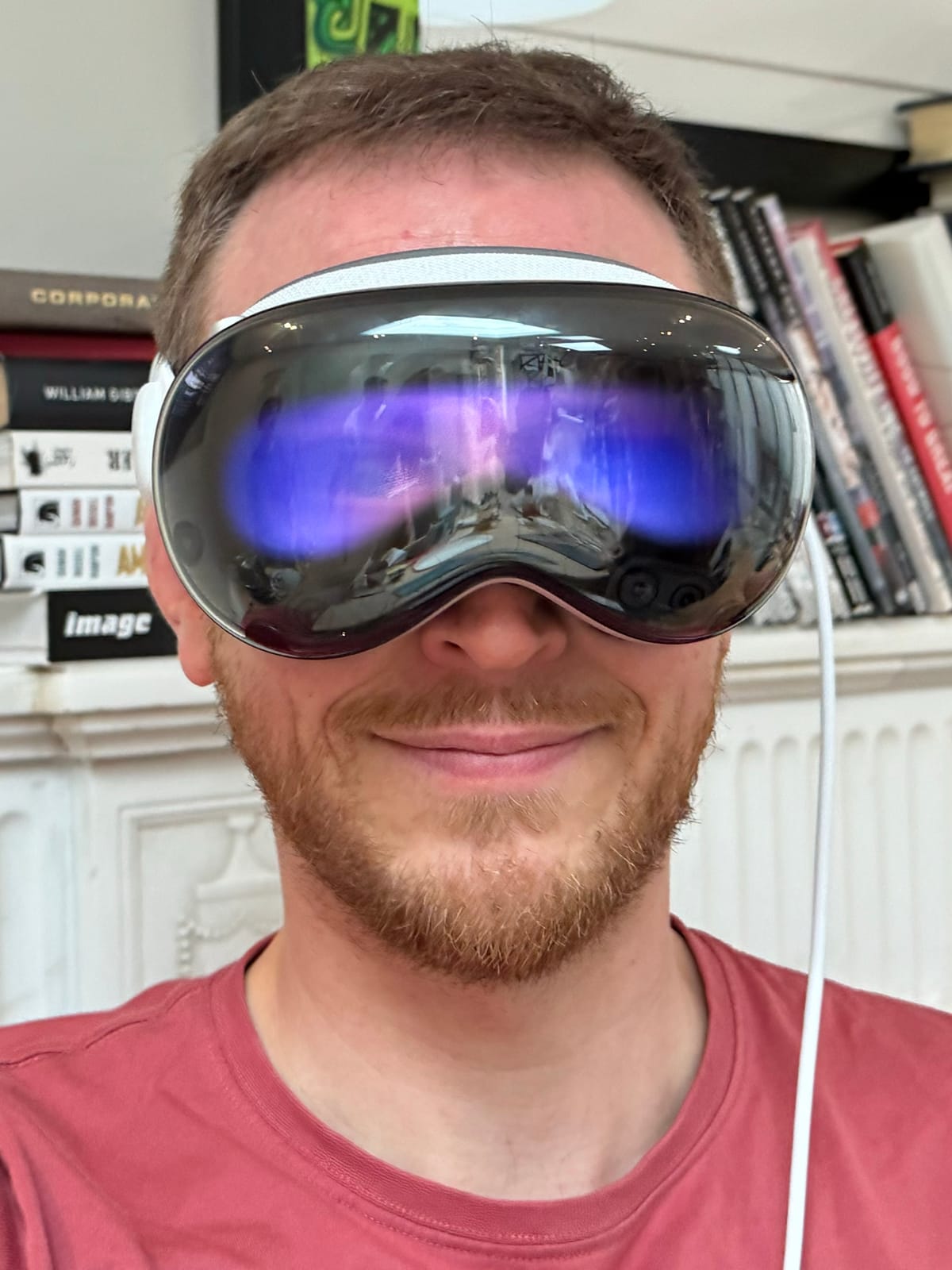A Provisional view of Vision Pro

In a recent Beyond Work Hackathon, the prize for the winning team was an Apple Vision Pro.
This is the best possible way to get access to a Vision Pro.
While I think the price is the least interesting thing about the device (it will become increasingly irrelevant over time), it’s an inescapably annoying part of its identity. It’s a distraction from the question: what is this?
Yesterday I spent most of my time using Vision Pro to try and answer that question. Here’s where I am so far:
Product
The big elephant in the room: what problem does this solve?
I suppose the answer is: you need some kind of surface to interact with digital apps and content.
Traditionally, this is solved with a variety of slabs of glass. You have a medium sized slab of glass at your desk for work, a nice big slab of glass on the wall, and a little slab of glass you keep in your pocket.
The little slab (your phone) was a big step forward, because it made accessing digital apps and content much more independent of location. But the limitation was you couldn’t use all the apps or content you might on the medium-sized slab. And you didn’t quite get the impact and wallop of watching a movie on the big wall slab.
Vision Pro is slabless access to digital apps and content. It does this by allowing you to float them in the real world around you, in whatever size you need, wherever you are.
It also does this by allowing you to replace the probably disappointing physical location in which you’re floating the content with a beautiful spot by a lake, water rippling, the faint sound of the breeze blowing through the trees, while Mount Hood looms over it all in the distance.
(obligatory pic in 3...2...1)

I'd rather have these options than all these stupid slabs of glass. I like buying slabs. But what if I could have infinite slabs, stream any slab into this view?
Why wouldn't I want virtual slabs or a slabless canvas for all my digital apps and content?
1. Nobody else can see the slabless canvas or digital apps/ content
2. They don't require you to strap the weight of a 12 inch iPad Pro to my face.
Hardware
The ability to see the real world at this level of quality and responsiveness (passthrough) is such an advance that I would not compromise that characteristic in exchange for anything else.
The battery pack is an inspired move. I don't notice it at all, I could happily live with it being bigger/ heavier and it feels like an obvious move for them to define it in the form factor today so they can move more components off your face and into that pod ASAP.
I've seen a lot of discussion that one day this will be in a glasses form factor and that's where it should be. I don't agree – I'd compare this to saying that LLM tech has to provide AGI to earn its worth. Smaller and lighter is nice, but I don't believe it's definitional, and I think the challenges in whether it's even possible make it a compromise to forget about for now.
Software/ interface
Truly effortless and natural. Multitouch made interfacing with the digital world unconscious in 2D space and this does the same in 3D. The fact the human brain is made for and expects a 3D space makes it even more intuitive.
The best things you can do with it are absolutely normal feeling things: and especially just streaming your Macbook into a space whenever you want.
This also makes me wonder if the division between Vision and Vision Pro product lines will be its independence from another Apple device. Meaning a lower priced "Apple Vision" might require a Macbook/ iPad/ iPhone, while Vision Pro exists entirely independently.
The role of photos is something different in a size where they feel like people. It's nice to sit a picture of my family next to me while writing – it's kind of what it should be on my desk at work. But they look real.
The full picture
I feel like this is a move from Apple to achieve conceptual dominance. In a landscape of disappointing and frustrating headset experiences, it instead refused to compromise on the dealbreakers, no matter what the cost.
In doing so, it has chalked out a landing zone for a truly appealing mass market product that changes the primary interface for our digital lives.
(Post Script: I expect my thoughts to change as time goes on – in some ways I think that's the most interesting bit of this – so expect more to follow...)

